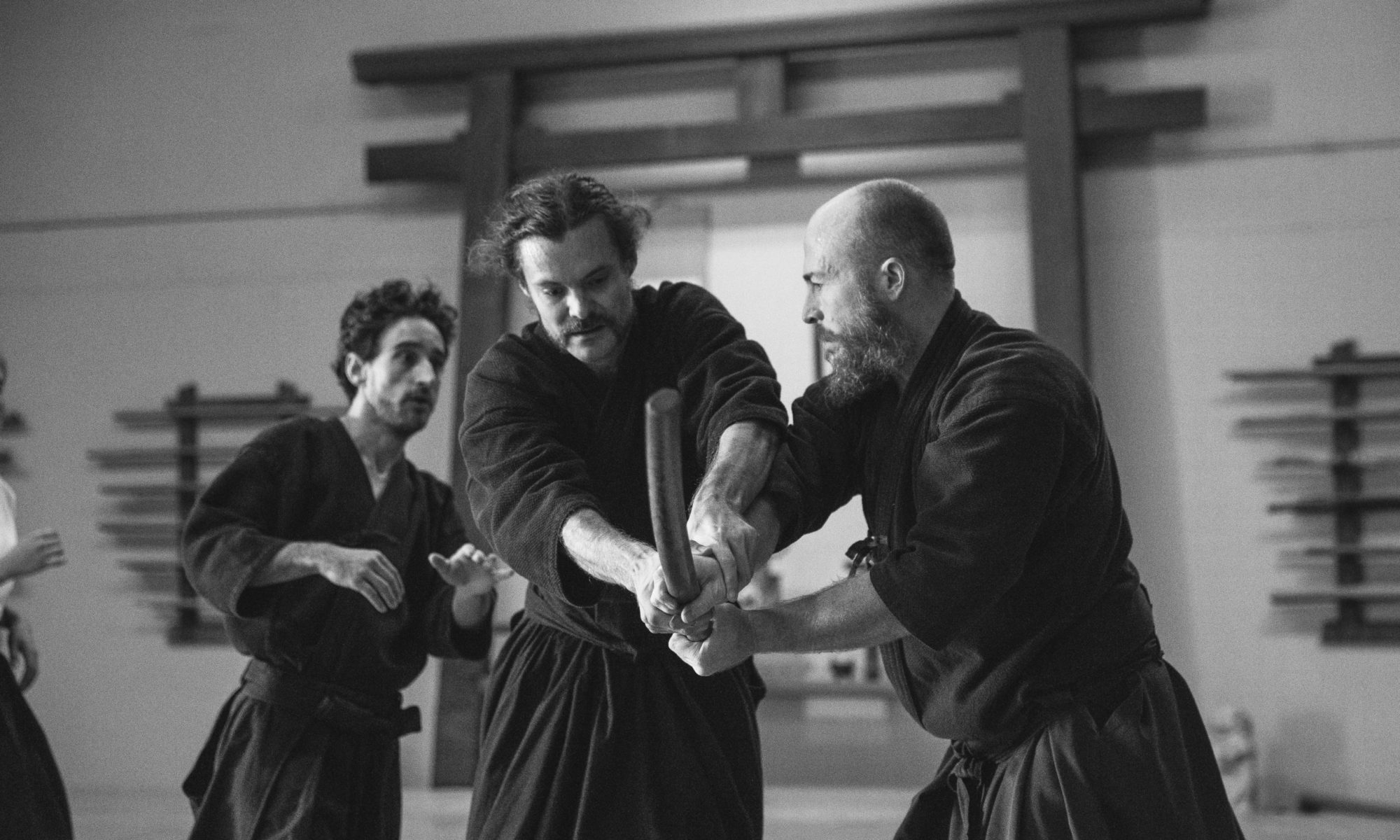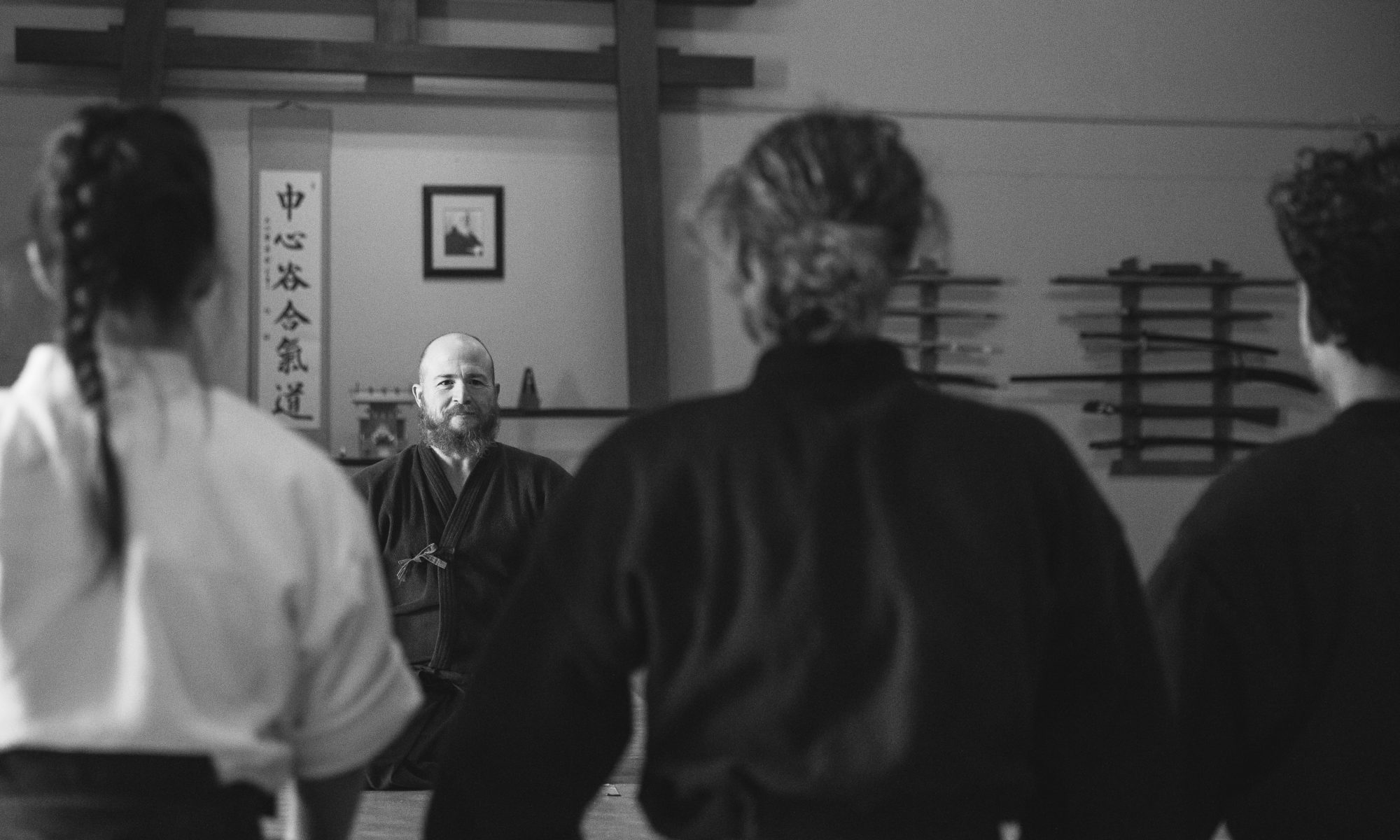The Modern Tenets of Aikido.
Aikido as a system has faced organizational challenges from day one. These problems with Aikido’s organization have led to much infighting, and as a result of this infighting, the major Aikido groups have spent more time tearing each other down than helping our system grow. I’d like to look at some things that we can agree on instead of looking at what makes us different.
Morihei Ueshiba, Aikido’s founder, was a martial artist and a mystic. His method of talking was enigmatic and filled with religious imagery. This made clearly understanding what he was saying a very difficult thing. Because of the founder’s heavy use of imagery and stylized speaking, even his closest students argued about what he was teaching. The varied interpretations and the desire of those making the interpretations to be “correct” has led to much bickering among high-ranking Aikido practitioners. Where did the founder want to take the art? There are lots of very valid opinions but no way to clearly know who is right.
During Aikido’s early years, these arguments may have served a good purpose. Our art was new, and clearly representing this original art to the uninformed public was important. Today, it has been nearly fifty years since the founder’s death, and Aikido has definitely taken on its own flavor! Perhaps it’s time to look beyond guessing what the founder wanted from the system and start looking at what the thousands of people who practice daily want from Aikido.
What would the majority of current Aikido practitioners agree are the things that Aikido training is about? I believe these are the things we should start to work on, and find the similarities between our styles and groups, instead of quibbling over the details. Aikido is in a desperate state, and we need to start working together!
Next year I will have spent 20 years studying Aikido. During my years studying Aikido, I’ve spent a lot of time with fellow Aikido practitioners of all styles. I have read, written, and thought about Aikido for thousands and thousands of hours. In this time, I would say that across styles there are a few things that the vast majority of Aikido practitioners agree upon:
Fostering a strong connection to Japanese martial heritage.
Studying and practicing Ki and Aiki development.
Redirecting the attacker’s force/aggression back towards them.
Causing no undue harm to the attacker.
Developing the ability to deal with multiple attackers.
These are some of the key points that the majority of Aikido practitioners would agree are important parts of Aikido training. I’d like to take a second to talk about these, what they mean to me, and what they might mean to us, as a community.
The first the list is “fostering a strong connection to Japanese martial heritage”. This is so obvious we often forget about it. The names we use for our techniques, the way we dress, the way we decorate our dojos and the foundations of the ceremonies and practices we do are all inspired by our strong Japanese martial heritage. Aikido practitioners at one point or another were very interested in Japanese martial lore. Maybe it was Samurai movies, or stories of invincible swordsman. Maybe it was in interest in the idea of a warrior monk or a meditative soldier. All of us feel a connection to Japan’s warrior caste of old! Regardless of style or affiliation we all love to put on our hakama, bow deeply to our uke and train in the old ways! It’s important to note, however, that Aikido is now a global martial art. Aikido is not a koryu (old traditional art) but a modern global art that loves to embrace the Japanese roots of Aikido, but is truly a world art at this point!
Second on the list is “studying and practicing Ki and Aiki development”. This point has been the hotbed of much Aikido infighting. From Koichi Tohei leaving the Aikikai to the more recent “Ki wars” on Aikiweb, this subject has been the focus of much fighting. The reason this subject brings so much hardship is that it is important to all of us! The problem is that we don’t agree on what Ki is or what Aiki means exactly. We love to argue the subtle points we love to enter our opinions and quote the founder or the early students to make our points. After all, the name of our art is the “way of Aiki”, so it must be pretty important. I will admit that I’ve gotten my hands dirty in these arguments quite a few times. It can feel so personal when someone else tells you they know the real meaning of Aiki and you and your group know nothing. This subject is a personal one for most of us. I think on this subject we need to keep an open mind. We need to acknowledge what other groups would call Ki or Aiki and try to see their point and why their interpretation seems correct to them or their group. In some cases we need to agree to disagree, but I think overall we should seek to understand each other’s’ viewpoints- I would suspect we are closer together than it might seem!
Third is “redirecting the attacker’s force/aggression back towards them”. I don’t know that the founder of Aikido directly spoke of this at all. I have seen his students talk about this idea and the idea of non-resistance quite a bit, but some might argue that this idea didn’t really come from the founder. Whether this is the case or not, I think it’s something that 90% of all Aikido practitioners would say is an important aspect of Aikido training. To me this is a good example or where Aikido as an art has grown organically and on its own. This is a good thing! As a group I would say most Aikido practitioners believe that Aikido techniques should use the force or aggression of the attacker.
“Causing no undue harm to the attacker” is fourth on my list. This can also be a tricky thing to discuss in mixed Aikido groups. To some undue harm means not to take a life, to others it means not to punch someone in the face or cause any pain! Undue harm is definitely a relative thing. This idea, however, gets at a larger core idea that most Aikido practitioners share- moral responsibility. While we may argue about the severity of action that a situation requires, I think we can all agree that Aikido is not an aggressive or cruel martial art. We don’t want to cause anymore harm in the world, simply be able to defend ourselves and those we love in a tough situation. This idea says a lot about us as a group, and why we are the kinds of people who would choose a martial art system like Aikido. We want to make the world a better, safer place, not make everyone fear us!
The last on this list is “the ability to handle multiple attackers”. Seeing multiple attacker practice in Aikido is probably something that caught all of our eyes. It is something the founder practiced regularly and the vast majority of us that have followed after have been interested in working on. This is an important factor for may reasons. It shows that we as a group are interested in overcoming great odds and we are thinking about a system outside of sport (while we should still be very accepting of sport). The amount of time that Aikido training spends on multiple attackers is interesting and rare in the martial arts world. It is definitely at the core of what most of us think a high level Aikido practitioner should be able to do.
I think that these five areas of focus are important to a great many of us. These five things start to outline the general motivations of our training culture. These are areas where we can start to agree and work together. Personally, I am very interested in helping the Aikido community start to work together instead of arguing about details, because our art is disappearing. Our seminars and classes get smaller each year. If you care about Aikido, as I do, let’s work together. Let’s put our differences aside and start to find the common ground!

